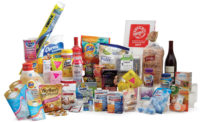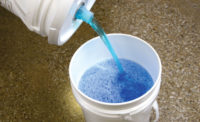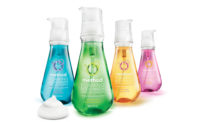Eco-friendly packaging, as well as sustainable materials, products and practices, are still top of mind for consumers as they strive to do what’s best for themselves, and the environment. CPGs are responding too with packages created with fewer materials – like thinner bottles, smaller caps, as well as different formats like pouches, cartons and bags.
According to Reportlinker, the market for global green packaging – recyclable, reusable or degradable packaging – is forecast to reach $274.15 billion by 2020, growing at a CAGR of 5.7%.1
Household packaging is a big segment in which consumers place more emphasis on being eco-friendly. One in five household care consumers place environmentally-responsible packaging among their top purchasing criteria, according to a Mintel report2.
The American Cleaning Institute’s (ACI) fourth sustainability report, “Foundations for Transformation,” showcases the steps the cleaning product supply chain is taking to address the industry’s core material issues. The 2017 report highlights the progress made by companies throughout the cleaning product supply chain to decrease the industry’s environmental footprint. And while some progress has been made, there is still a lot that can be done.
“We need to see greater engagement and participation from companies large and small in the transactions that make up the sustainability fabric of our supply chain. Now more than ever, we call upon the industry to consider bold collective actions that can drive momentum toward sustainable development,” says Melissa Hockstad, ACI’s new president and CEO.
Since its start, ACI’s Sustainability Metrics Program has been tracking industry performance in categories including energy, water, waste and climate change/greenhouse gases, to highlight areas where members are doing well and shine a light on areas that need improving. So what did the program find? The report highlights:
- Reduction in greenhouse gas emissions, totaling a 23% reduction during cleaning product formulation since 2011
- Increase in renewable energy use by 46% since 2011
- 64% of the waste from product formulation was reused or recycled in 2015
While these statistics show that there has been progress in sustainability efforts since 2011, other categories tracked show there’s still work to be done on the industry level:
- Uptick in greenhouse gas intensity between 2011 and 2015, even though absolute emissions were down
- Lack of improvement in energy efficiency, remaining relatively consistent since 2011.
Some companies are ahead of the curve and working hard to create products that are good for the environment, with packaging to match. Method introduces a new pouch, made from 20% post-consumer recycled (PCR) resin, for the brand’s dishwasher-cleaning product.
The product, Power Dish, is now delivered to consumers in a reclosable polyethylene (PE) stand-up pouch developed and produced by Amcor (amcor.com). The pouch boasts a carbon footprint that is up to two-thirds smaller than the package it replaced.
Joe Hunter, director of packaging development at Method, says consumers are increasingly seeking products and packaging that are better for the environment.
“One of Method’s core values is to ‘pioneer the future,’ and this new, more sustainable monofilm pouch is another step in that journey,” says Hunter.
According to Amcor, using PCR resin in flexible packaging reduces the need for virgin petroleum, which shrinks the carbon footprint. This improvement, together with the pack being recyclable, makes the overall carbon footprint 64% smaller when the package is recycled at store drop-off points, says Alex Hayden, vice president of research and development for Amcor’s flexible packaging business in the Americas.
Side note: Since 2015, Amcor has operated an on-site bottle production facility in Method’s facility in Chicago, annually keeping more than 600 truckloads of finished bottles off the road before they are filled and, in the process, eliminating more than 200 metric tonnes of carbon-dioxide equivalent emissions.
There is so much opportunity within household packaging to deliver to consumers a greener, and more eco-friendly package. Flexible packaging is a fun option that combines this trait with user-friendliness and aesthetics in a whole package that consumers feel good about using. Keep reading to learn more about another eco-friendly household product in the case study that follows.
For more information about household packaging, including tips and trends on home fragrance, design and specialty printing, go to packagingstrategies.com/morehouseholdpackaging.
- www.reportlinker.com/p03281894-summary/Global-Green-Packaging-Market-Forecasts-and-Trends.html
- Mintel Report – Household Care Packaging Trends - US - January 2016





